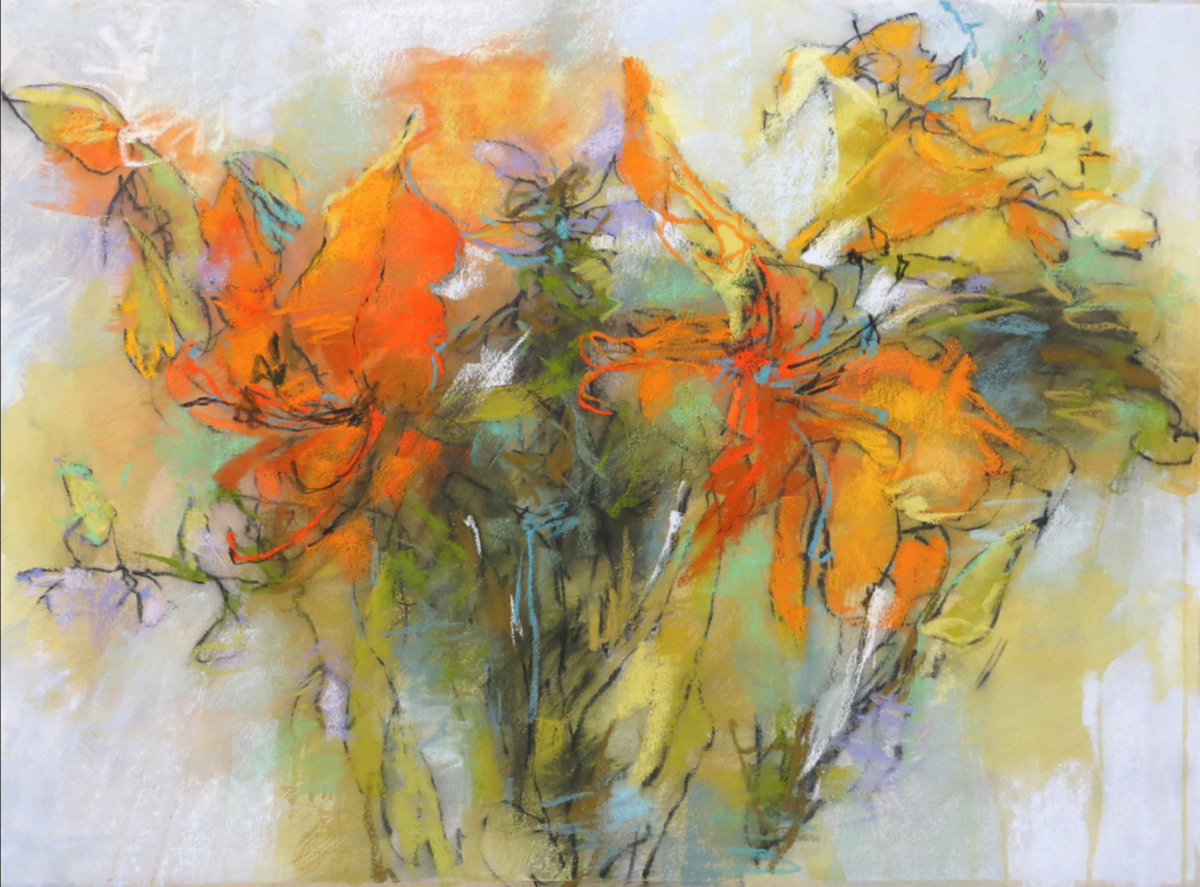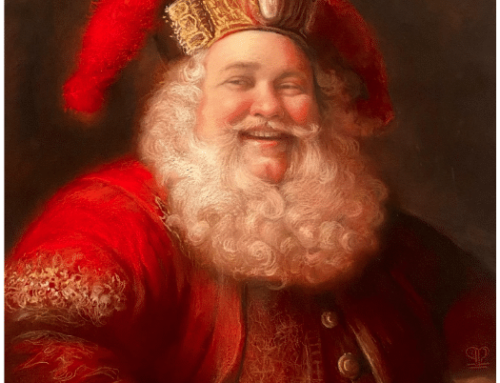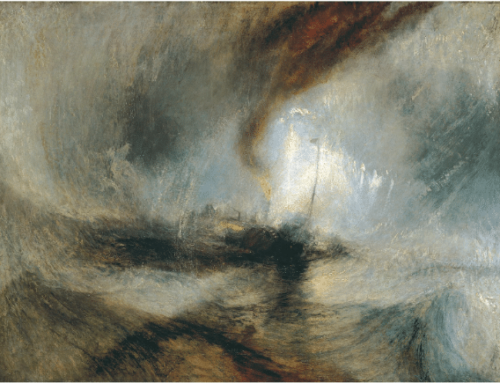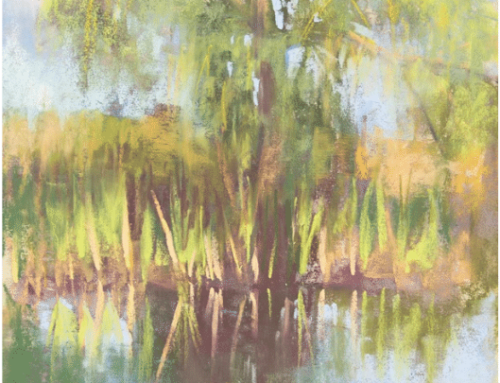Debora Stewart creates abstract and semi-representational pastels and acrylics born of her most meaningful experiences of the natural world. What many people don’t understand about abstract painting, she says, is how difficult it is to do well; the main reason though, she says, is that most people just don’t know what to look for. “People do not understand how to judge abstract art,” she says. Hardly surprising when the history of modern art – or any kind of art, actually – is so rarely taught in our public schools.
Debora works in both soft pastel and acrylic mixed media on canvas. She has taught abstract workshops extensively throughout the U.S. and is a sought-after instructor by pastel societies, art guilds and schools. She is the author of Abstract Art Painting: Expressions in Mixed Media published by Northlight Books in 2015 in addition to a series of popular teaching videos for Streamline Publishing.
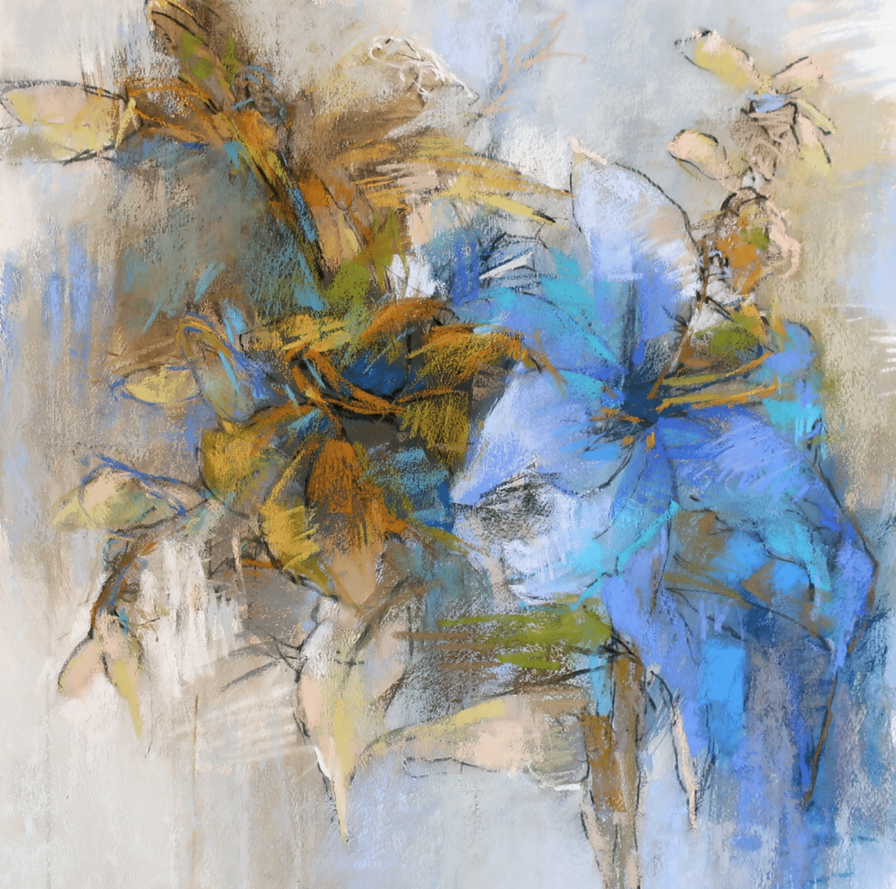
Debora Steward, Blue Daylily 22×22 pastel on Rives BFK ‐ Pastel ‐ Paper ‐ 22 x 22
Most people new to painting unconsciously judge a work based on how well it measures up to standards of realism that date back to the Renaissance. But what’s always been most important is what a painting emotes, expresses, evokes or inspires in the viewer. Meticulous realism is only one means to that end. Abstraction can be another. Professional fine art painter Debora Stewart walks us through the place of abstraction in her art, life, and career.
INSIDE ART: What lessons can realist painters learn from abstraction?
Debora Stewart: “I believe abstraction is another “side of the coin” from the inspiration we observe and its interpretation. Sometimes it is expressed realistically, and at others it is expressed abstractly, but the inspiration may be the same. But it is also more than that, as I believe it is about our internal experience of being alive [which can sometimes be better expressed] through abstraction.
“I create nonobjective abstracts as well as semi-realistic works in pastel on paper and acrylics on canvas. I often tell people that both come from the same inspiration, which for me is my experience of nature. With abstract florals, I often draw from observation in life. I use these drawings later in the abstracted works in pastel. The same experience can also be used in nonobjective works because I tap into the experience of being in nature. I may remember the feeling of sun, the colors I observed, the smells in nature, and the sense of place. This experience influences what I do in a non-objective painting. My internal frame of mind and memory of the experience influences color choices and mark-making.
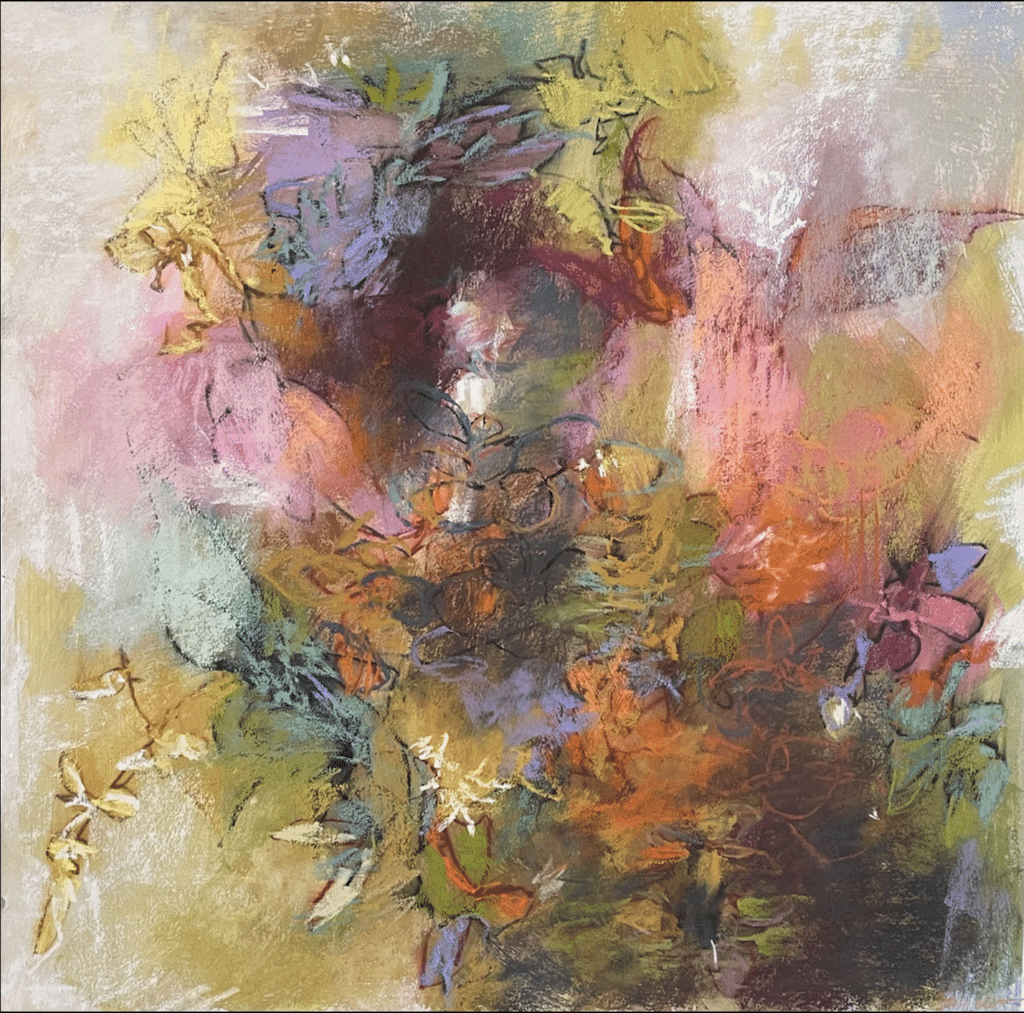
Debora Stewart, Tapestry ‐ Pastel ‐ Paper ‐ 30 x 30
INSIDE ART: What do most people not understand about abstract painting?
Debora Stewart: “Abstract painting involves many of the same concepts as realistic work. In my workshops, I talk about the elements of art, composition, value, color choices, placement of shapes, and many of the same things that are taught in realistic painting. I have taught many workshops and I am often told by the participants that working abstractly is actually much more difficult than they thought it would be. I usually say that abstraction is challenging and should be. It is a process and a different way of seeing.
“I think painting abstractly allows me to tap into intuition and internal states of mind. Painting abstractly helps take me out of my head and into more of a felt experience. It also allows me to be more in tune with the canvas or the paper in front of me. It is a dialogue between myself and the surface.
“Working abstractly is also an adventure! You begin and do not know where you will end up, which I find exciting. You work without an end in mind, so it’s a process of discovery.
“Creativity is hard to describe, but for me it’s the ability to become lost in the process, which I think of much like meditation. It is not following a defined format or “how to,” but rather it is following impulses and always asking questions. I am always asking ‘what if” questions. What if I tried this, what if I do it a different way, what if I turn the paper or canvas upside down or put it on the floor? I am always searching. Creativity for me is freedom.”
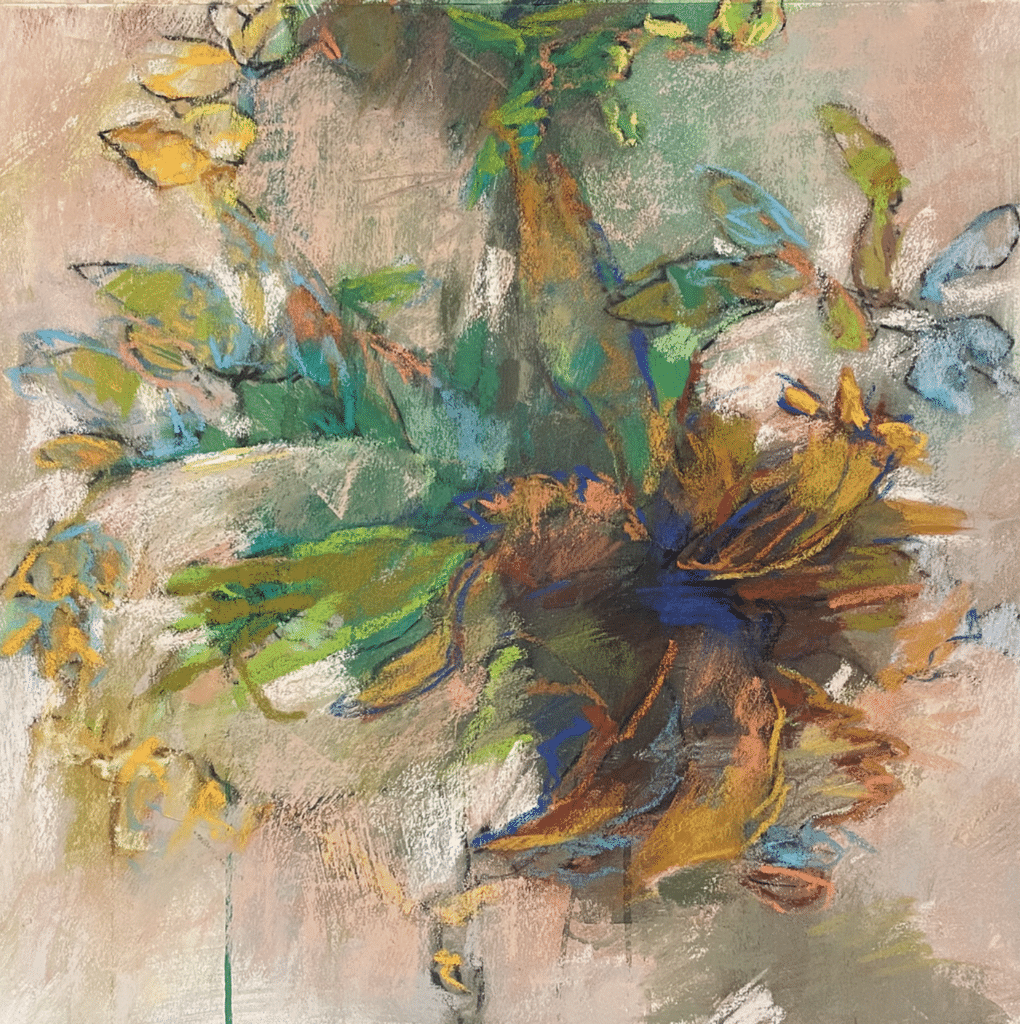
Debora Stewart, Arabesque ‐ Pastel ‐ Paper ‐ 22 x 22
INSIDE ART: Why make art? Do you have a personal philosophy of art and art-making?
Debora Stewart: “Why make art? That is a good question. I guess I think creating art for me is a response to being alive in the world. I have always thought about my own work in art as a type of journal. My art is a reflection of who I am. The process of creating personal art is self-discovery. I try to clear away what doesn’t feel right to me and respond to what does.
“There have been times in my life when I have not made art or have been creative and I have felt empty and very frustrated. Art also allows me to cope with life and the challenges in life. I’ve worked full-time most of my life in other careers, but art, and my vision for art was always on my mind.
“It would have surprised my colleagues in my various jobs that, as we were sitting in meetings, I was thinking about painting. When I look at paintings from history, and I stand in front of a painting in a museum, I can see the world and the artist experience through their work. This is a profound experience.”
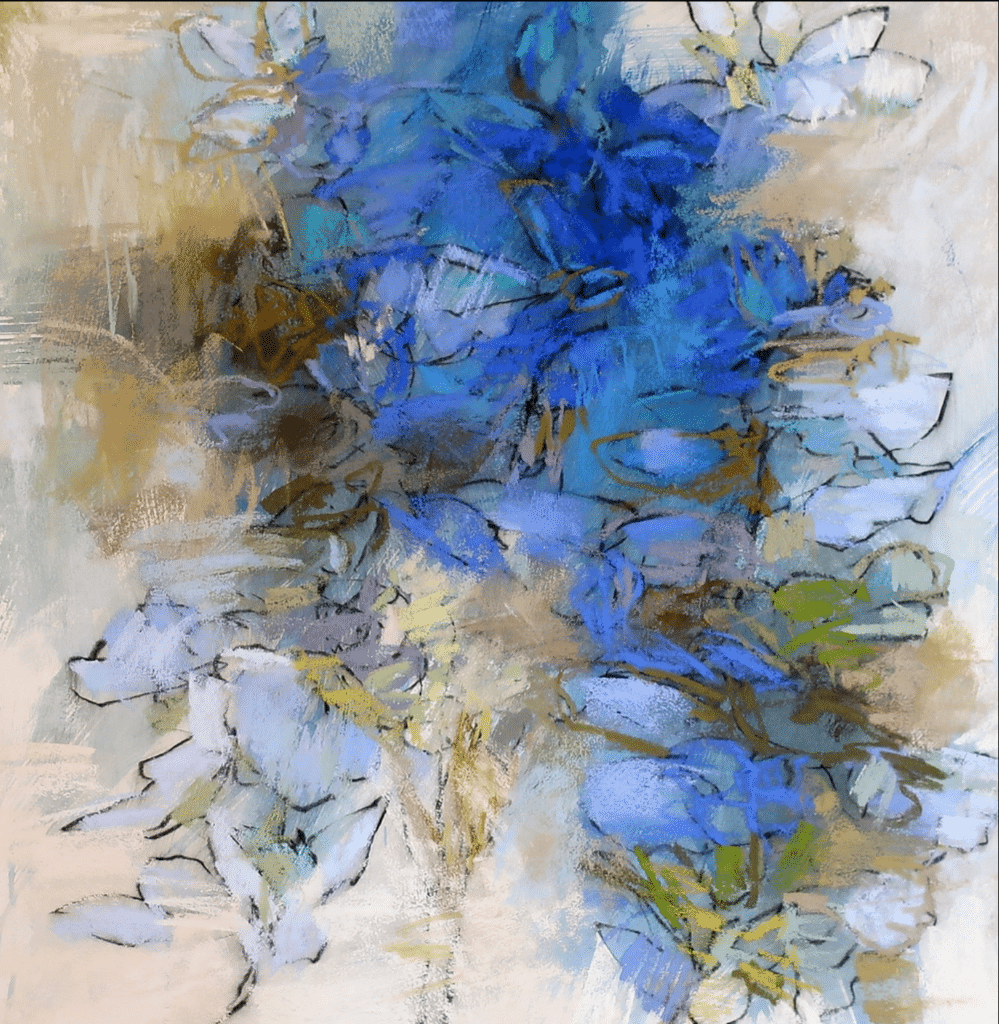
Debora Stewart, Blue Garden 22×22 pastel on Rives BFK ‐ Pastel ‐ Paper ‐ 22 x 22
INSIDE ART: What has been surprisingly helpful to you regarding the process of building your career?
“When I was young I had raw ability but I had no direction. I believe the time I spent working in other careers taught me many skills that I have used in building my career in art at a later age. I learned how to set goals and achieve them, how to write, give presentations in public, organize trainings, write curriculum, and many other business-related skills. All of these skills have really helped me write my book, organize workshops and provide demonstrations. Business skills have also helped me to promote myself as an artist and develop relationships with galleries.
“These are skills I did not learn when I was younger. I think business skills are so important for an artist. Creating the work is often the “easy” part and the business aspect is the most challenging – but it’s essential to making art a career.”
“Debora L. Stewart is a Signature Member and Master Pastelist of the Pastel Society of America and a member of the Master’s Circle of the International Association of Pastel Societies. Her work has been included in many national and international juried and invitational exhibitions in the U.S. and abroad.
Head for the Hills!
Plein-Air Festival in the Adirondacks Set for June

Asher B. Duran, Adirondack Mountains, NY
This year’s plein-air festival in the Adirondack Mountains is set for the week of June 10, 2023.
Called the “Publisher’s Invitational,” it’s a massively popular annual event for painters held in the beautiful mountains overlooking the Hudson River in upstate New York. It is open to anyone who wants to attend. It’s designed for painters who just want to paint with other painters. Many are plein-air festival painters who don’t get enough of a chance to paint with friends. This is all play – no work, no show, no sale, no workshop – just friends and new friends painting together.
Register for this year’s festival today.

